The Paris of the Pampa, the City of Books, the Capital of Tango — for many people, Buenos Aires means many things. But let’s talk about the hard facts! Argentina’s capital and South America’s second-largest metropolis has a population of 3 million permanent residents, joined during the day by up to 10 million more from the outer districts, all of whom who spend their time in one of the city’s 48 neighborhoods. We’ve summarized the best. Take a look!
Palermo
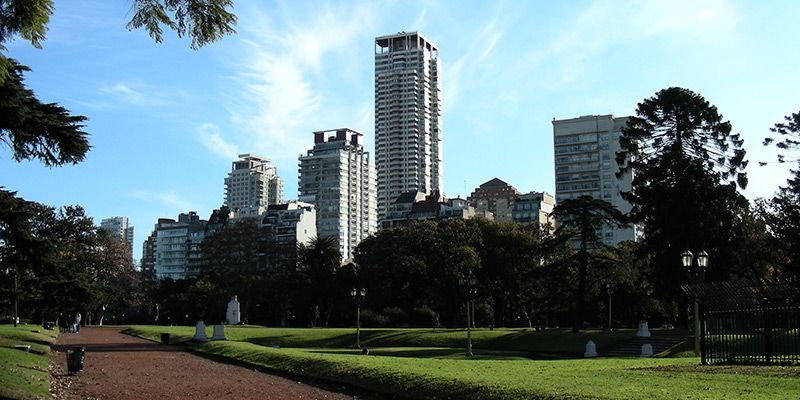
The largest barrio and by far the most expat-friendly of all Buenos Aires neighborhoods is the multifaceted Palermo. Euro by name and by nature, its central location, and important institutional and cultural centers make Palermo impossible to avoid. And why would you? When you can visit: Palermo Soho for dancing and drinking, El Ataneo bookstore, the Evita Museum in Cerviño Street, and the Bosques de Palermo parks.
Hollywood
What do you mean Hollywood? While not technically a neighborhood of its own, Palermo Hollywood is a significant hipster addition to the plethora of cosmopolitan locations BA has to offer. It forms part of the Palermo barrio and was branded ‘Hollywood’ because of the large presence of television news headquarters in the suburb. Visitors to Hollywood will enjoy: top-ranked restaurants and cafés, the Flea Market, and brilliant outlet stores!
Las Cañitas
Two down and we’re still technically in the same suburb. Las Cañitas, another sub-neighborhood within Palermo, is known for boasting one of the highest concentrations of bars and restaurants in all of Buenos Aires, which is why on weekends it’s one of the ‘places to be.’ Consider checking out: shopping and restaurants on Baez street, and polo matches at the Campo Hípico Militar.
Recoleta
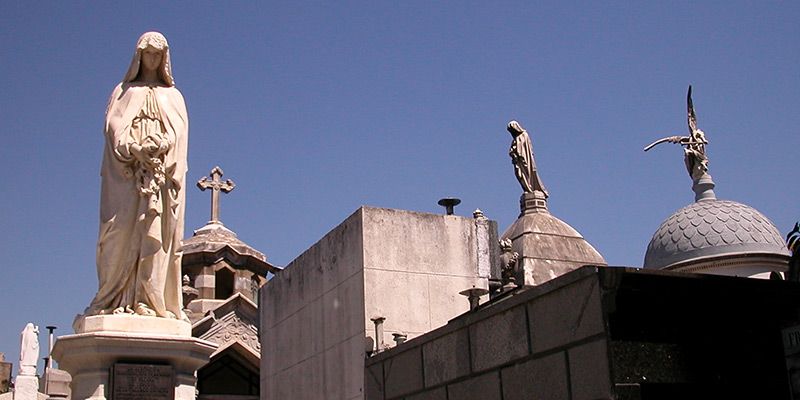
If those dazed and disorientated, perhaps jetlagged, visitors were to ever confuse Buenos Aires for Paris, then they’re probably lost in Recoleta. With its palatial facades, closed-door restaurants, and high-end and antique shopping, it’s the suburb of all suburbs for the classic Buenos Aires aristocrat. Sights include: Recoleta Cemetery where Eva Perón is buried and the Recoleta Cultural Center.
Microcentro
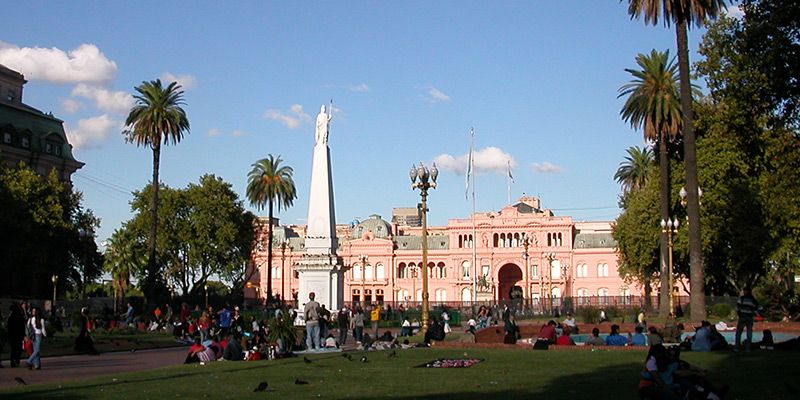
If there’s one place in the world’s eighth largest nation where the majority of its power, money and influence are concentrated, it’s Buenos Aires’ Microcentro. This bustling business district comprised of several small neighborhoods includes the Casa Rosada (Pink House, Government House), the Senate, the Stock Exchange, and Ministries galore. Also see: Florida street for shopping, and our Spanish school in Barolo Palace.
Retiro
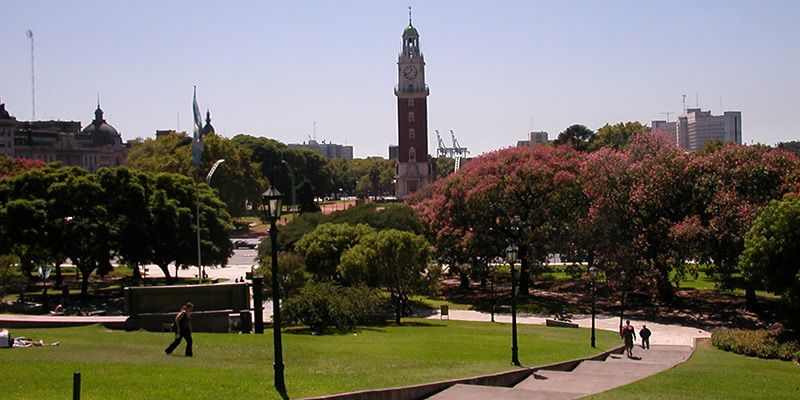
If you’re planning on traveling through Argentina on one of the first-class bus services (or even on one of the more back-breaking options, for that matter), then you’re bound to pass through the Retiro barrio. Once the playground of the rich and even-richer, Retiro is now a land of contrasts, home to 5-star hotels not too far from one of the city’s biggest shantytowns (villas). Worth checking out are: the skyscraping Art Deco, Kavanagh building and Galeria Pacífico shopping center.
San Telmo
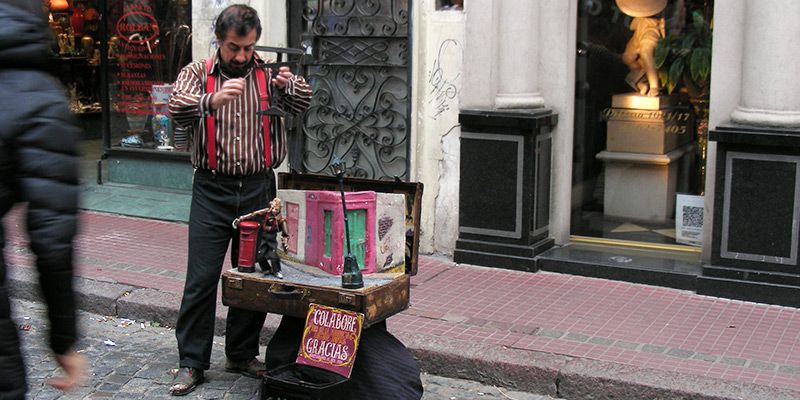
You simply cannot come to Buenos Aires and skip San Telmo. Small in size but large on culture and history, the suburb lies to the south of Microcentro and boasts cobblestone streets, spectacular dining options, weekend markets and live Tango performances. In San Telmo, discover: the permanent San Telmo Markets, the weekend street markets, antique shops, and prominent national museums.
La Boca
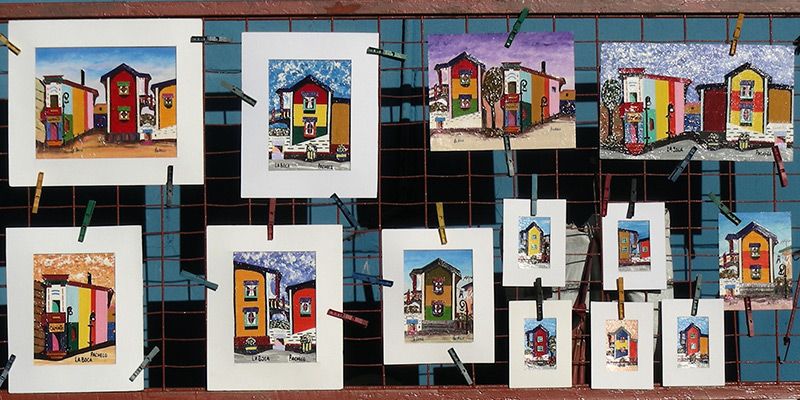
If for no other reason, La Boca is a must-see destination in Buenos Aires for El Caminito, a world-famous street in the heart of the suburb. A vibrant visitor hub, offering live Tango performances and knickknack shopping, Caminito is reference point for the Argentine dance of love, the Tango. And with good reason — it was in La Boca where the Tango took its first steps! Don’t forget to visit: La Boca football stadium (La Bombonera), and the Fundación Proa contemporary art museum.
Belgrano
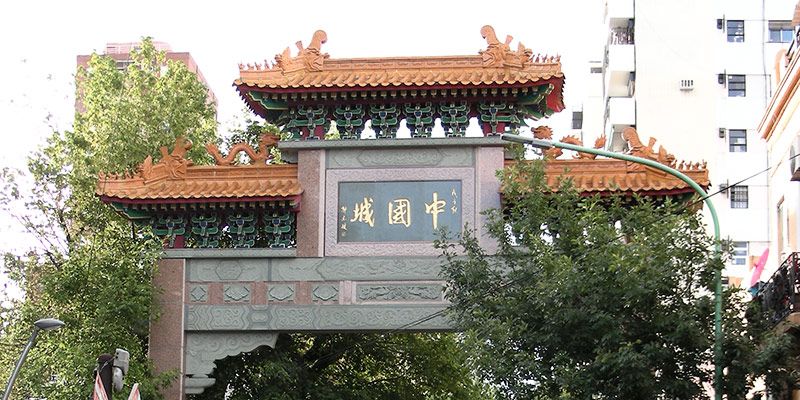
Slightly off the tourist radar is the upper-middle-class residential neighborhood of Belgrano. Bored yet? You shouldn’t be; Belgrano offers visitors some incredible dining options, high-end shopping and the quirky Barrio Chino (China Town). You can also: access to the northern part of Bosques de Palermo and find great imported food ingredients in China Town for your favorite Asian, Indian and Mexican dishes!
Puerto Madero
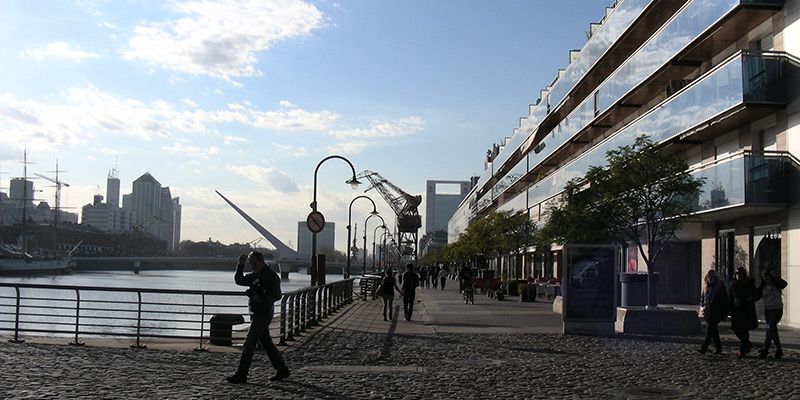
High-flying, big-spending, rich and probably-getting-richer — Puerto Madero residents have established a modern, chic neighborhood in the heart of Buenos Aires — well, just to the side — across the bridge from the Casa Rosada. In this dockland neighborhood you’ll discover: the nearby Costanera Sur ecological reserve and some great dining options (though be warned, some are overpriced tourist traps).
Chacarita
This upcoming barrio in Buenos Aires is best known for its massive 95-hectare cemetery — much bigger than the Recoleta Cemetery, and with all the same opulent trimmings as its more centrally located counterpart! Today, with the growth of the outer neighborhoods of Palermo, Chacarita, like the neighborhood of Almargo, is increasingly known for its unique spin on all things bohemian. Check out: reasonably priced nightlife and dining options, and the Teatro Gargantua for community theater.
Once
You’d be forgiven for thinking you were in Tel Aviv or New York when you visit Once, while if you pay attention to the accents floating about the neighborhood, you might also think you’re in Bolivia or Paraguay. Once is a typically Argentina neighborhood, living up to the nation’s proud migrant tradition, as the home of much of the city’s Jewish population (the largest in the Southern Hemisphere) as well as many migrants from neighboring countries. Highlights in Once are: Alabasto shopping center and Tango shows.
Wanting something more general? Find out more about studying Spanish in Buenos Aires!
Originally published on Ailola by Jayson McNamara on May 24, 2015.
